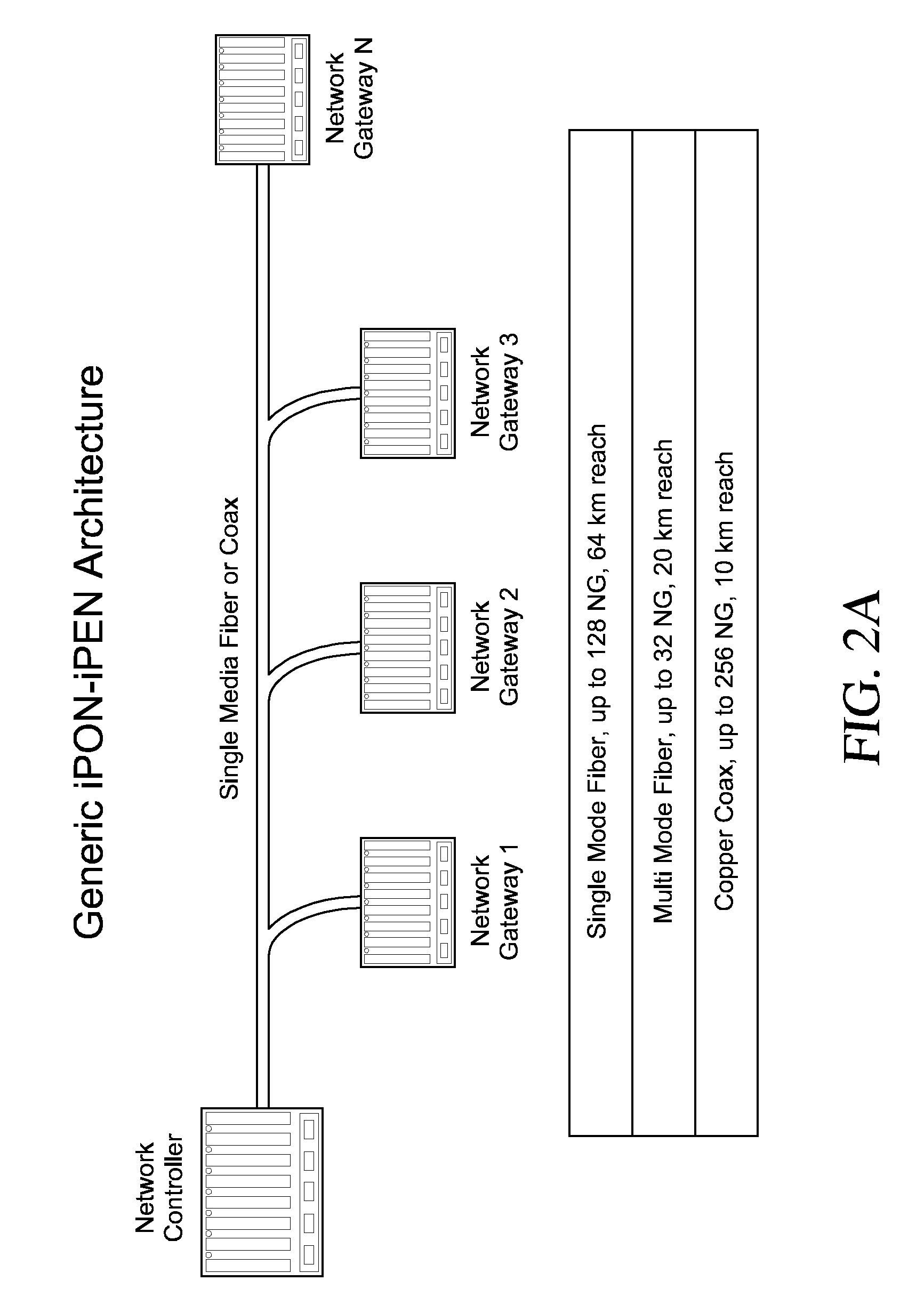Inverted Passive Optical Network/inverted Passive Electrical Network (iPON/iPEN) Based Data Fusion and Synchronization System
- Summary
- Abstract
- Description
- Claims
- Application Information
AI Technical Summary
Benefits of technology
Problems solved by technology
Method used
Image
Examples
Embodiment Construction
[0043] The Passive Optical Network (PON) is a protocol standard (e.g., ITU-T G.983, G.984 and IEEE 802.3ah and EFM) that supports nominal line rates of 1244.160 Mbit / s and 2488.320 Mbit / s in the downstream direction and 155.520 Mbit / s, 622.080 Mbit / s, 1244.160 Mbit / s and 2488.320 Mbit / s in the upstream direction. Both symmetrical and asymmetrical PON systems have been defined and deployed. PON utilizes passive optical technology which greatly reduces the cost and power requirements while significantly enhancing system reliability.
[0044] The uses of passive optical splitters and wave division multiplexing (WDM) technologies for an individual sensor or groups of sensors is the enabling technology for highly deterministic coherent sampling between distributed sensors. With these technologies, time synchronization and sensor sampling accuracy of less than 10 nanoseconds can be achieved. PON provides a Time Domain Multiple Access (TDMA) network and can support many network protocols fro...
PUM
 Login to View More
Login to View More Abstract
Description
Claims
Application Information
 Login to View More
Login to View More - R&D
- Intellectual Property
- Life Sciences
- Materials
- Tech Scout
- Unparalleled Data Quality
- Higher Quality Content
- 60% Fewer Hallucinations
Browse by: Latest US Patents, China's latest patents, Technical Efficacy Thesaurus, Application Domain, Technology Topic, Popular Technical Reports.
© 2025 PatSnap. All rights reserved.Legal|Privacy policy|Modern Slavery Act Transparency Statement|Sitemap|About US| Contact US: help@patsnap.com



